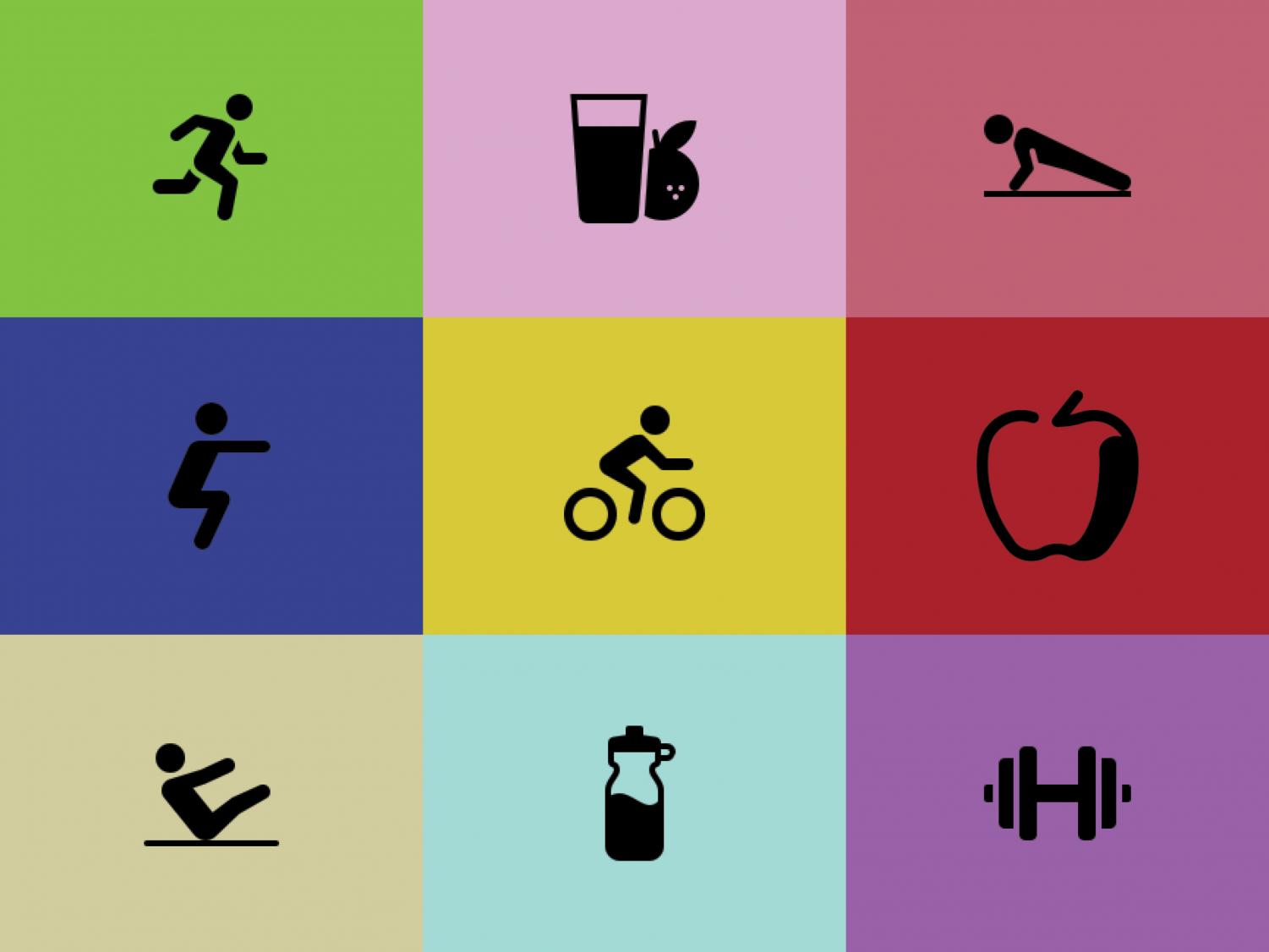When COVID-19 has resulted in the closure of gyms, recreational facilities, beaches and national parks, students who regularly work out must find ways to stay in shape. For those who lack indoor gym equipment, exercising while social distancing poses another challenge. With summer quickly approaching, working on that “summer bod” is a productive method of coping with the effects of the pandemic. With some guidance, you can still stay fit under quarantine.
Putting aside time in your day to work out will allow you to maintain some consistency in your schedule. Exercise physiologist and 24 Hour Fitness Center’s vice president Kevin Steele said in an interview with WebMD that an effective fitness program has five specific components, all of which you can do at home.
1. Warmup
A simple warmup activity can be as easy as enjoying a brisk walk outdoors. Whether you go to a nearby park or a local track or around your cul-de-sac, loosening up your joints and warming up your muscles is all that matters.
2. Aerobic workout
Aerobic exercises focus on the heart and blood vessels, so jumping rope or following a step aerobics video on YouTube would suffice. The most important factor is to get your heart rate up and your blood pumping.
3. Strength-building exercises
For resistance and strength-building, you can do push-ups, squats and abdominal crunches. These exercises can build muscle strength while defining and toning.
4. Flexibility moves
Flexibility exercises are as simple as small stretches or training your splits. A peaceful start to the day or the calm to your storm after a long day, yoga is a relaxing, soothing method to increase flexibility.
5. Cooldown
A light stretch or easy walk cools down your muscles after all of these exercises. It could be similar to your warmup, or even a little less intense. Listen to what your body needs at that given time and focus on breathing in through your nose and out through your mouth.
You can accomplish these five tasks through a circuit method, a form of body conditioning or resistance training using low to high-intensity aerobics.
As this process becomes easier, you should increase the difficulty and length of these exercises for constant growth. Once you reach a comfortable point, you should increase the difficulty for your warmup, like changing your walk to an uphill climb. Also, adding weights to squats or propping a leg up on an object like a block when practicing the splits increases strength and flexibility. Remember to avoid complacency or intense comfort with where you are in your fitness journey. Even during a global pandemic, you should always work toward something, not just in something.







